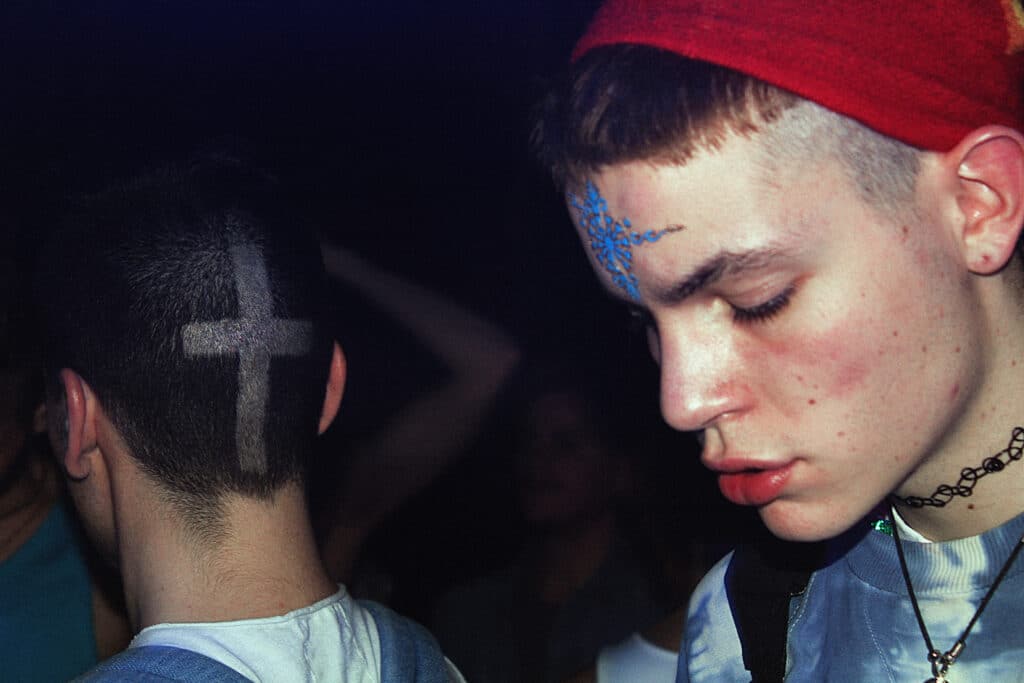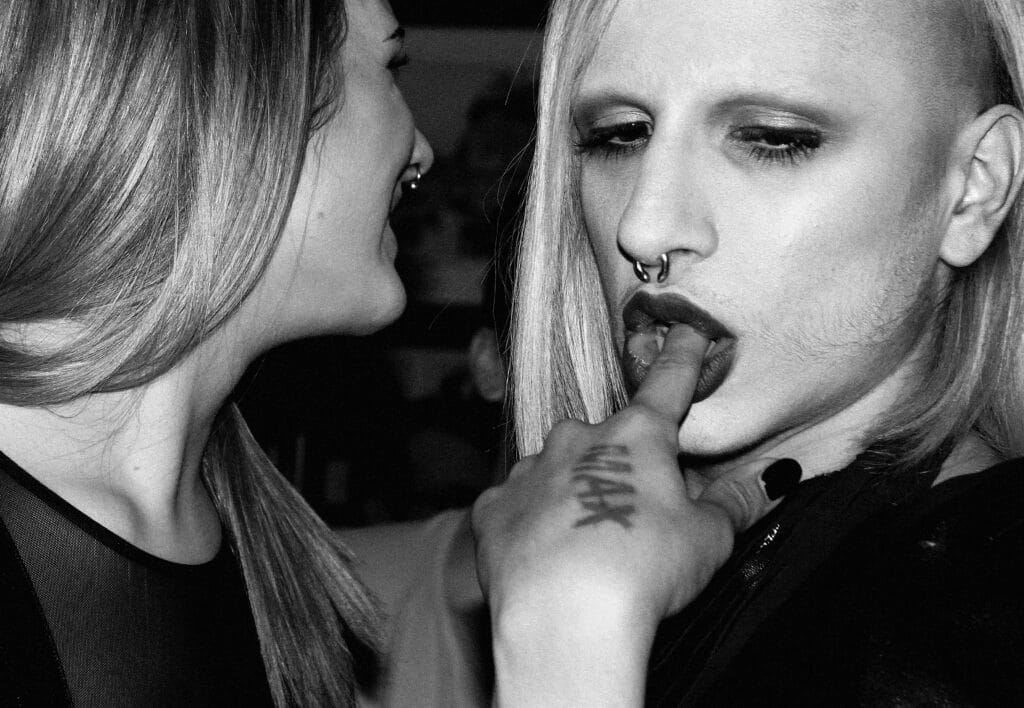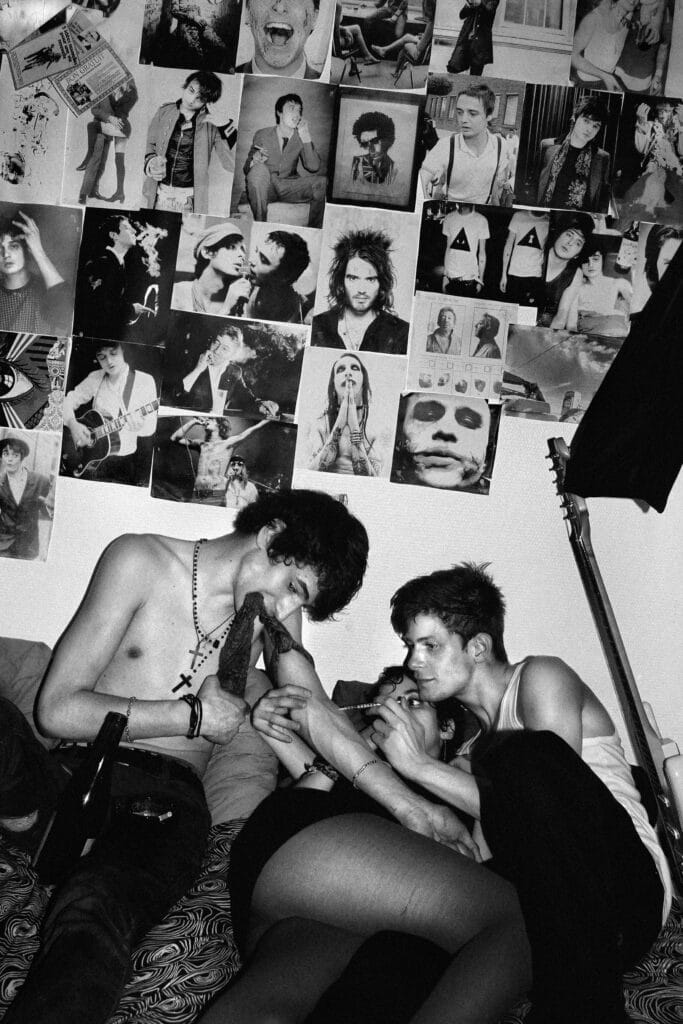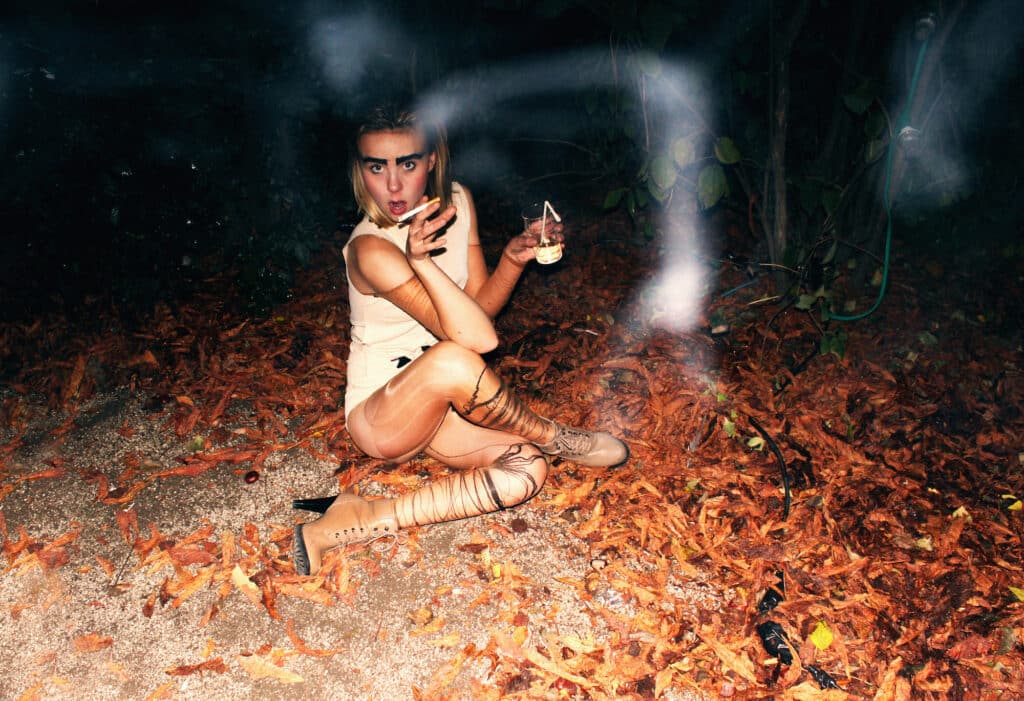“Some see in my photos expressions of joy and celebration, others something sad or even painful. The reality is probably somewhere in the middle. There is no staging. This is my life.”
The words of thirty-six-year-old Hannibal Volkoff convey the contradictory feelings that his images might evoke in the viewer. However, one mustn’t jump to conclusions about the work of this discreet, yet unabashed, photographer and gallery owner. What is certain is that no one goes away indifferent.

We meet him in a small street in the Marais, in Paris’s 3rd Arrondissement. The Hors-Champ Gallery, which he opened in 2011 with his business partner Bernard Pegeon, is just round the corner, at 20, rue des Gravilliers.
Volkoff welcomes us in a modest apartment with a Spartan decor. In the library, books chosen with taste hint at our host’s sensibilities. We chat over cigarette smoke and glasses of Côtes-du-Rhône wine about art, of course, in particular about photography, the “eighth art,” and the Hannibal’s own surprising lifestory.
Sensuous bodies and raw scenes
Born into a fallen aristocratic family from Nantes, Volkoff grew up in an environment infused with strong Catholic values. In a climate where taboos and secrets would sometimes cover up a dark reality, the photographer had to find spaces where he could live his life freely.
“Very early on, I witnessed abuse in my family circle. I can say today that, although I was not a victim, we lived in an atmosphere infused with violence and incest.”
Volkoff took refuge, first in “a phantasmagorical, libidinal universe,” secretly recording the racy passages from the films he watched, then in pornography. The stage was set. These moments of sexual intensity resonated years later in the photographer’s approach to documenting his daily life.
Because, it must be admitted, Volkoff’s images constantly oscillate between sensuous bodies and raw scenes—a world that our contemporaries tend to either fantasize about or decry with bias and prejudice.
“I don’t produce pictures for magazines like Vogue or Vanity Fair,” Volkoff explains. “In my subjects’ exhibitionism, there is no desire to be beautiful or shocking, but rather to show different experiences of the body that are something like a manifesto.”

“Desire, sharing, and violence”
This is what we are talking about when we look at the images of Volkoff: an alternative experience of life; a sensory rebellion against the injunctions of society. This is undoubtedly also what the artist is looking for in the visual testimonies of street protests he photographs: “Some find it surprising that, in my works or exhibitions, I combine moments of raw intimacy with parties and demonstrations. For me, this is all part of the same thing. There is desire, sharing, and violence.”

A form of libertine and libertarian ode that is also constitutive of the author’s interiority. In such an overflow of incandescent energy, life and body are not immune to death, as Volkoff is well aware: “Once, someone said to me: ‘I have never seen such a sad exhibition,’ he saw in it a projection of his own experience, of the risks that the practices I show remind him of, of the AIDS years, and of the people who died in the aftermath.”
The power of Volkoff’s images certainly lies in a sincere and, whatever one may think, gentle willingness to feature those who light up by day and burn by night. In the end, it’s a good way of living with melancholy.

Hannibal Volkoff is the author of two collections of his photographs, published by Presses Littéraires : Nous naissons de partout (2016), 18,00 €, and Nous qui débordons de la nuit (2019), 20,00 €.

